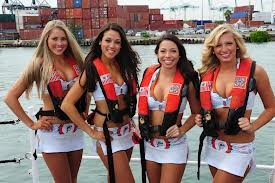Delta_JimS
Senior Member
- Joined
- Dec 15, 2012
- Messages
- 278
A question folks,
While enjoying the thread on Top Ten Rules, I noted a few times the reference to Lifejackets on the Flying Bridge. I have followed the Forum for a couple years now, took a few Power Squadron courses and try to keep abreast of good safety practices, but never heard this mentioned so much. Is there a "rule-of-thumb" or tradition to keeping PDFs on the Bridge?
When I bought Satori some 3 years ago, several quite old and most discusting rotted lifejackets were found in the Bridge lockers. The lockers were similarly quite gross and took a couple of hours to clean out with thick rubber gloves, and are still not somewhere I would ever store PFDs. I am sure if the CG had asked and ever seen them, they would reject them as valid on the vessel. The Bridge was previously mostly uncovered in Alameda and exposed to weather year around.
I understand that space in the cabin is a premium, and I struggle with this all the time, but I find space to keep my PFDs, LifeSling and Tackle, as well as all other safety gear well protected (some in plastic bags) in cabin lockers. The several regulation PFDs that I bought with the boat still look like new; granted they have never been over-board either.
Is there a Seaman's Logic that I am missing here; or just making more of it that it is?
Are the PFDs kept on the Bridge for most reliable access as the boat is sinking? Safer there than behind the flames coming up from the ER?
Where do you store your PFDs and Rescue Lines?
Thanks.
While enjoying the thread on Top Ten Rules, I noted a few times the reference to Lifejackets on the Flying Bridge. I have followed the Forum for a couple years now, took a few Power Squadron courses and try to keep abreast of good safety practices, but never heard this mentioned so much. Is there a "rule-of-thumb" or tradition to keeping PDFs on the Bridge?
When I bought Satori some 3 years ago, several quite old and most discusting rotted lifejackets were found in the Bridge lockers. The lockers were similarly quite gross and took a couple of hours to clean out with thick rubber gloves, and are still not somewhere I would ever store PFDs. I am sure if the CG had asked and ever seen them, they would reject them as valid on the vessel. The Bridge was previously mostly uncovered in Alameda and exposed to weather year around.
I understand that space in the cabin is a premium, and I struggle with this all the time, but I find space to keep my PFDs, LifeSling and Tackle, as well as all other safety gear well protected (some in plastic bags) in cabin lockers. The several regulation PFDs that I bought with the boat still look like new; granted they have never been over-board either.
Is there a Seaman's Logic that I am missing here; or just making more of it that it is?
Are the PFDs kept on the Bridge for most reliable access as the boat is sinking? Safer there than behind the flames coming up from the ER?
Where do you store your PFDs and Rescue Lines?
Thanks.


